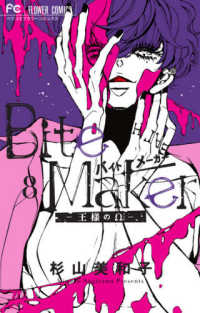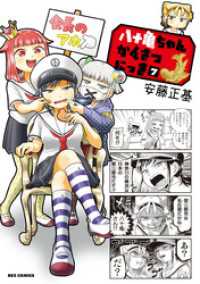Full Description
Through an innovative interdisciplinary reading and field research, Igor Chabrowski analyses the history of the development of opera in
Sichuan, arguing that opera serves as a microcosm of the profound transformation of modern Chinese culture between the 18th century
and 1950s. He investigates the complex path of opera over this course of history: exiting the temple festivals, becoming a public obsession
on commercial stages, and finally being harnessed to partisan propaganda work. The book analyzes the process of cross-regional integration
of Chinese culture and the emergence of the national opera genre. Moreover, opera is shown as an example of the culture wars that raged inside
China's popular culture.
Contents
Acknowledgments
List of Plates, Table and Maps
Introduction
PART 1: Opera in Qing-Era Sichuan
1 Development of Opera in Qing-Era Sichuan
1 The Role of Opera in Qing Society
2 Opera and Construction of the Community
3 The Nineteenth-Century Flourishing: The Role of Opera in Shaping Local Religious Practice
4 Opera and Shaping of the Material and Social Landscape
5 A Market Town: A Temple-Centered Society, An Opera-Centered Society
6 The Big City Perspective
7 Opera between the Elites and the Commoners
8 Opera, Officials, and the Social (Dis)Order
9 Concluding Remarks
PART 2: The New Institutionalization: Law, Market, Politics, and Culture of Commercialized Art, 1902-1937
2 A Transformed Relationship: Theater and Power after the Qing New Policies
1 The Three Forces of Change: Destruction of Temples, Commercialization, and the New Legal Order
2 New Policies and a Novel Way of Doing Business in Sichuan
3 The Protecting Power of Official Greed: Republican Commercial Theater
4 Taxing
5 Helping Hand
6 Women on the Show
7 Rectifying Opera
3 Commercial Opera: Shaping the City and Shaping the Actors
1 Theaters and Urban Zoning: Researching the Social Background of the Audiences
2 Early Transformation in the Social and Spatial Geography of Opera
3 Republican Theaters and Urban Zoning: Crystallization of the Opera's Public
4 Commercial Theater and Actors' Careers
5 Concluding Remarks
4 The Culture of the Commercial Opera
1 The Methods of Studying Opera: Troupes, Talent, and Repertoires
2 Watching the Commercial Show: How Was It Served?
3 Favorite Plays and the Cultural Universe of Sichuan Audiences
4 Gods, Emperors, Heroes...
5 Time and Place
6 Concluding Remarks
Illustration Quire
PART 3: Creating the New World
5 The Divide: Local Intellectuals and the Cultural Conflict
1 Commercial Daily's Explorations and Experimentations with New Drama
2 Dissatisfaction, Estrangement, Elitism, and a Turn to the Left
3 Radicalization and Rejection
4 Concluding Remarks
6 The Times of the Nationalists (1937-1949) and the War
1 Performing Arts Culture
2 Military Emergency and China's Migration to the Southwest
3 Inventing the Wartime Theater
4 Putting Words into Action
5 Living through Frustration: Playwrights and the War
6 An All Too Visible Context: Sichuan Opera and the War
7 Concluding Remarks
7 Revolution: Communist "People's Art"
1 Communist Conquest of Sichuan: A New Political Context
2 Political and Ideological Basis of the Opera Reform
3 Breaking the "Superstitious" Opera
4 Adjusting to the New Party-State Policies
5 Seizing Control over the Opera Companies
6 Opera Becomes Useful to the Communist State
7 Policy in Action: Chongqing, 1951-1952
8 Concluding Remarks
8 Conclusion
Bibliography
Index








